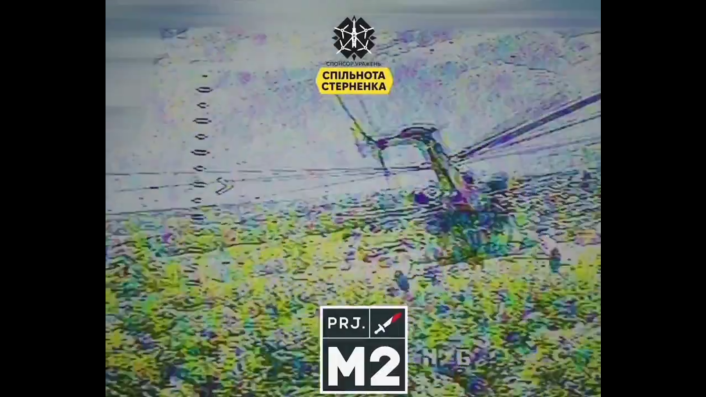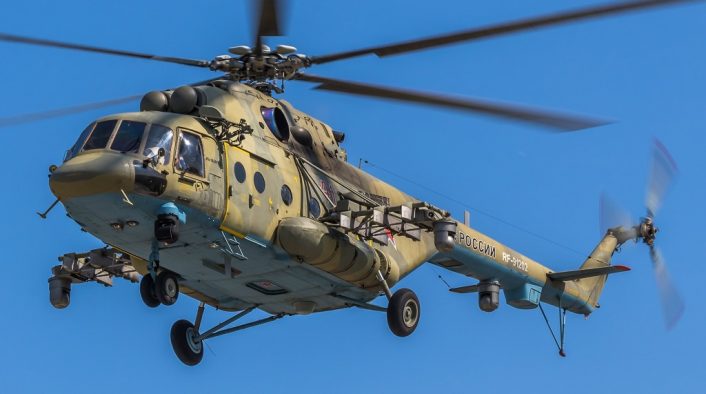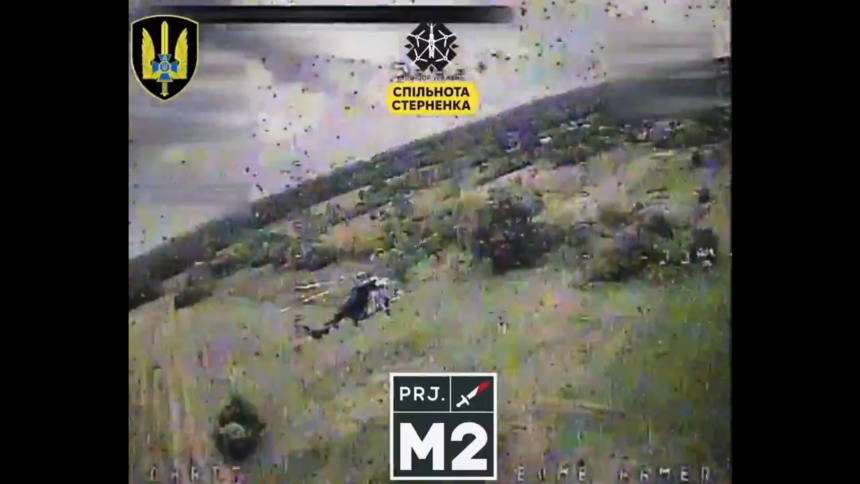A new video shows a Ukrainian FPV drone attacking a Russian Mi-8 transport helicopter, apparently hitting its tail assembly. A second video shows a Russian Ka-52 helicopter shooting down a Ukrainian drone with an anti-tank missile.
Amid the Ukrainian surprise offensive in the Russian region of Kursk, multiple videos are emerging showing a novel use for the ubiquitous FPV (First-Person View) drones, employed for the first time to strike military helicopters mid-flight. The most recent one reportedly shows an attack by the Security Service of Ukraine (SBU) against a Russian Mil Mi-8 (Hip for NATO) transport helicopter.
We recently reported on a similar video showing a collection of clips from three different FPV attacks on low-flying Russian helicopters, first by a drone approaching a Mi-8 from the left, then by an FPV attacking and reportedly hitting a Mi-28 attack helicopter on the tail, and finally a drone approaching from behind what appeared as another transport helicopter.
💥 Russia: Ukrainian drone operated by the SBU struck a $15 million Russian Mi-8 helicopter in Kursk region. pic.twitter.com/HSlRcKkJVc
— Igor Sushko (@igorsushko) August 9, 2024
The first and the last attempts had the video cut before being close to the targeted helicopter, but it’s unclear if it could be a result of jamming by the helicopter. Russian Mi-8 helicopters have been known to be able to carry EW suites for some time, albeit originally designed to counter MANPADS (Man-Portable Air-Defense Systems) and radar-guided missiles.
As the war in Ukraine has already shown, the widespread use of drones has prompted a new “War of the Waves” between drones and jammers, and it’s possible Russian helicopters may have updated their EW suites, as the Chinese are doing.
ПЕРШЕ У ІСТОРІЇ УРАЖЕННЯ ГЕЛІКОПТЕРА ДРОНОМ У ПОВІТРІ!
Воїни підрозділу М2 Центру спецоперацій СБУ змогли вчора завдати удару по російському Мі-28 довгим FPV, на який ви раніше донатили.
На жаль, інформації про подальшу долю гвинтокрила немає.
Також на відео ще 2 спроби заходу… pic.twitter.com/bsqVAHs6Ja
— Serhii Sternenko ✙ (@sternenko) August 7, 2024
The new attack against a Mi-8
The new video clearly shows the shape of a Mi-8 transport helicopter as the drone approached from the rear. For a second the screen faded to static while getting close to the target, but then a slow motion clip shows the drone getting steadied just aft of the tail rotor. The drone then pushed again forward and presumingly struck the target.
The video is clearly from a different assault than the one previously released, or at least of a different attempt at one of the two Mi-8s in the older video. In fact, the video shows an attack starting from a distance and from the rear right quarter, almost from 3 o’clock compared to the helicopter, while the other two Mi-8s in the previous video were attacked from the left side (10 o’clock) and from directly behind.

While it’s unclear from the video the extent of the damage the Mi-8 suffered (as it’s common with FPV drones, unless they are observed from a second drone), Ukrainian activist Serhii Sternenko reported that it was hit in the tail “with a powerful fragmentation warhead” and that it “stopped working in the specified area”, indicating at least a successful hit and a damaged helicopter.
The tail assembly, meant to counteract the torque produced by the main rotor, is one of the most critical parts of a helicopter, and if damaged would prompt the helicopter into yawing to one side or, in the worst case, to start spinning on its axis. The consequences of a catastrophic tail hit can be seen in a video we reported upon at the start of the war in Ukraine, showing a Russian Mi-28 attack helicopter crashing after being hit in the tail by a British-made Starstreak MANPADS that entirely separated the tail from the main body of the helicopter.
Moreover, FPV drones are usually designed to take out armored vehicles and tanks, and can wreak havoc against unarmored helicopters and delicate engines and rotor transmissions.

Similar to reports of the other recent attacks on helicopters, Ukrainian sources are reporting the attack as happening in the Russian region of Kursk. Ukraine has launched a major cross-border assault in the area on Aug. 6, 2024, with reportedly a thousand of troops and dozens of armored vehicles and tanks crossing the border, and the attacked Russian helicopters appear to be part of the Russian response to this operation.
The US-based Institute for the Study of War (ISW), in its latest update, claims that Ukraine is still advancing further east in the Kursk oblast, at least 20 km from the international border, with Russia hastily redeploying units from other areas (including, according to Russian milbloggers, from around Kharkiv, and irregular forces from the Donbass) to counter the unexpected attack, in a move that could leave other areas in the occupied territories of Ukraine unprotected.
Footage is also appearing of a Ukrainian strike on a Russian truck column near Oktyabr’skoe along the 38K-030 Sudzha-Korenovo highway, and of a Ukrainian strike on the Lipetsk airfield, over 285 km from the frontlines and known to host Russian Su-34, Su-35, and MiG-31 fixed-wing combat aircraft.
The Ka-52 vs drone
Another video was published by Russian Telegram channels, this time showing a reversed situation. In fact, the video shows the screen of a Ka-52 attack helicopter as it tracks a Ukrainian drone, before launching against it a 9K121 Vikhr anti-tank missile and apparently destroying it.
There are no details about the date or the location of the attack, or even indications whether this is related to the events in the Kursk region. The degraded infrared image transmitted in the screen and the distance from the target also don’t not allow to discern any useful feature.
For first time in history, a Ka-52 attack helicopter of the #Russian Aerospace Forces shot down a drone using 9K121 Vikhr anti-tank missile. pic.twitter.com/UOd3D8jYIO
— Babak Taghvaee – The Crisis Watch (@BabakTaghvaee1) August 10, 2024
The growing threats to helicopters
So far, before this latest video appeared, both Ukrainian and Russian forces acknowledged the loss of at least three Russian helicopters, including a Mi-28, Mi-8 and Ka-52. Now this second Mi-8 joins the growing list.
Mi-8s, despite being a dated design, still play a pivotal role for the Russian Armed Forces, being the rotary-wing workhorse for transport duties, but also for light attack roles.
With a payload of 4,000 kg or 24 fully equipped soldiers (compared to just 1450 kg or 11 troops in the UH-60 Black Hawk), they can provide fast transport along the frontlines, and if they are equipped with rocket pods and ATGMs, they can even fill in for some roles usually reserved to attack helicopters.
The fact that such an important asset, worth over 15 $ million, can be taken out, even mid-flight, with just cheap FPV drones (a further increase in threats for pilots, after we already reported of attack helicopters being downed by repurposed Ukrainian Stugna-P ATGMs) is a testament of the changing battlefield realities and growing threats to airplanes and helicopters that the war in Ukraine is highlighting.









